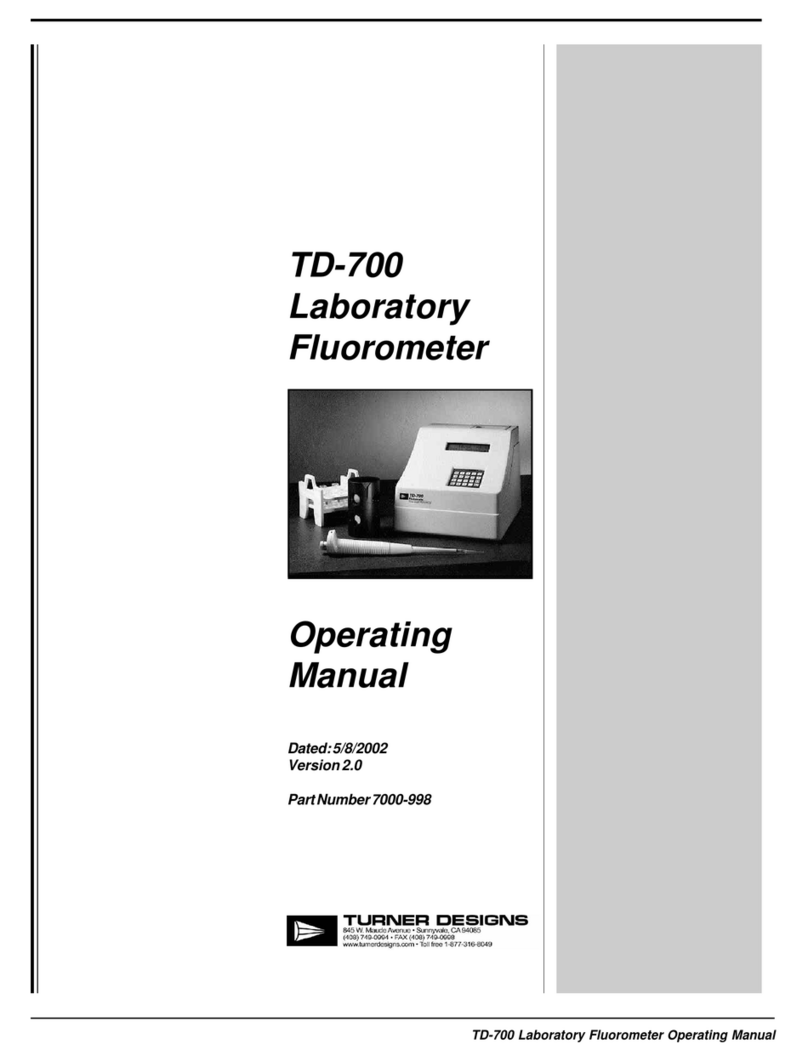
TD1000C™Oil in Water Monitor INTRODUCTION
PN 101687
REV G TD-1000C Oil In Water Monitor
Operation Manual 5
To ensure understanding of proper system operation, Turner Designs Hydrocarbon Instruments strongly recommends
reading this manual in full. After reading the entire manual, please review the following:
INSTALLATION: Prior to installation, completely review APPENDIX A: INSTALLATION
CHECKLIST.
START-UP: Prior to start-up, completely review 4 START-UP.
CALIBRATION: Prior to calibrating the TD1000C™, completely review 5 CALIBRATION.
TROUBLESHOOTING: Prior to calling Turner Designs Hydrocarbon Instruments for assistance,
completely review APPENDIX D: TROUBLESHOOTING.
1 INTRODUCTION
The TD1000C™ on-line oil in water monitor detects aromatic hydrocarbons in water using uorometry
in combination with a proprietary ow cell. The TD1000C™ provides process monitoring through output
signals which may be used to activate control devices to stop, divert, or dilute process streams.
This microprocessor-based uorometer consists of optical components, an on/off controller with
electrical inputs/outputs for a ow switch, a 4–20 mA output signal, two 5 VDC alarm outputs and one
120/240 VAC alarm output. The TD1000C™ is engineered to ensure reliability and pre-assembled to
simplify installation, plumbing and calibration. The monitor is designed to provide trouble-free operation
with only simple, routine maintenance.
1.1 SYMBOLS
The following symbols are used to call attention to specic types of information.
A warning to use caution! In some instances, personal injury or damage to the TD1000C™ may result
if these instructions are not followed properly.
An explanation or information of interest.
An explanation or information of interest.
If the manual instructs the user to press a key on the instrument, the designated key will be
CAPITALIZED in boldface type enclosed by < >.
Display screen names will be in boldface type and in ALL CAPITALS.
References to appendices, tables and gures will be in boldface type and in italics.




























